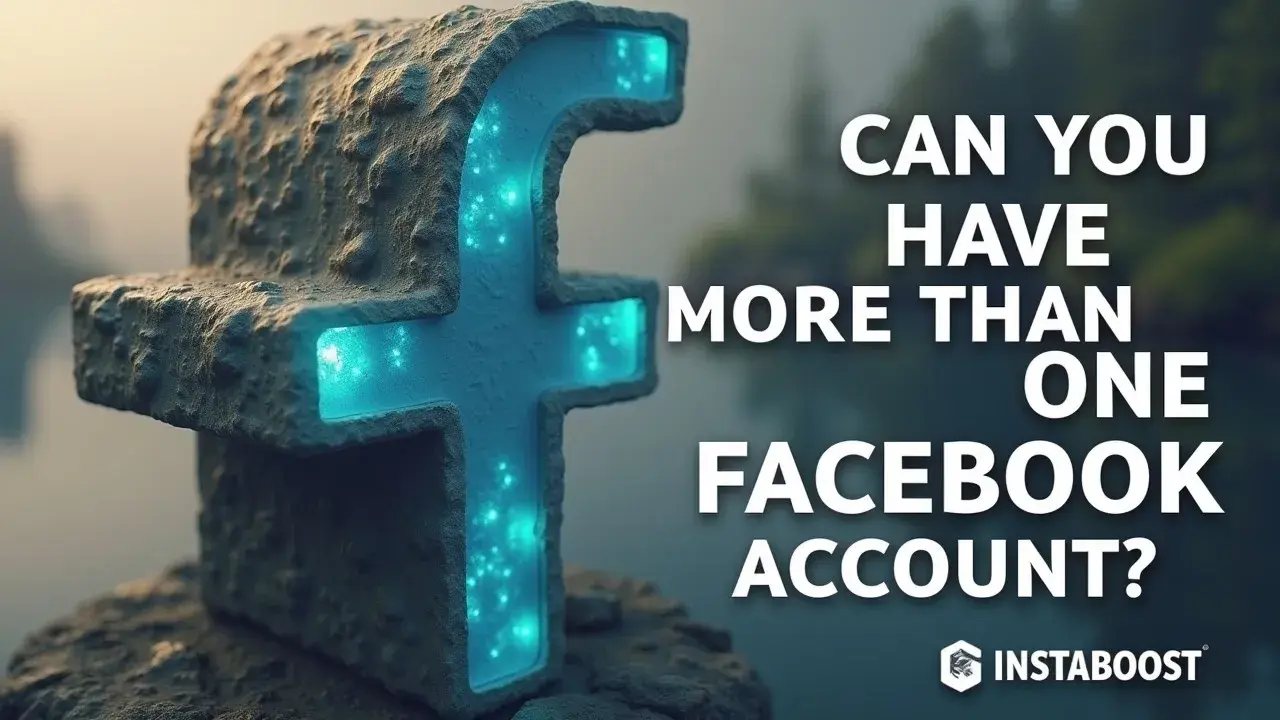Can You Have More Than One Facebook Account?
Multiple Facebook profiles can be used when roles are clearly separated. Distinct personal and work circles reduce mixed-audience moments and make boundaries easier to manage. In the first month, track weekly message volume and response times to see whether clarity improves and conversations route to the right profile. A smart path is to maintain consistent details on each profile and review early reactions to fine-tune how each one serves its audience.
One Login, Many Roles: What’s Actually Possible
If you’ve ever wanted to keep family photos away from client DMs or split a hobby group from a hiring pipeline, the practical question is the same: can you manage more than one Facebook account without chaos? Facebook is built around one personal identity, yet there are sanctioned ways to segment your presence that cover most needs – Pages, professional mode, Business Manager, and creator profiles. The smart move is to match roles to the right containers, and the same logic underpins frameworks like Facebook strategy for fast results that prioritize clean asset separation over account sprawl.
Your real-name profile anchors trust and relationship depth. A Page or professional mode handles discovery, targeted promotion, and clean analytics. This works when you add retention signals like consistent replies within 24 hours and thoughtful comment threads, plus measured boosts from qualified ad accounts tied to Business Manager, not random burners.
If you spin up an additional profile, make it intentional with separate admin access, brand-safe posting, and clear community guidelines – so collaborators can publish, creators can cross-post, and your personal feed stays clean. The non-obvious insight is that clarity scales faster than duplication. One well-structured identity, extended by proper assets and roles, usually outperforms multiple orphaned profiles because it concentrates engagement, improves delivery to the right audiences, and preserves a coherent trust graph.
If you need a second presence for a distinct brand or market, build it as a Page with its own content cadence, creator collabs, and a testing loop for ads and organic. Track response time and weekly message volume to validate the split. That way you get separation without giving up discoverability, history, or compliance with Facebook’s platform rules.
If you need a second presence for a distinct brand or market, build it as a Page with its own content cadence, creator collabs, and a testing loop for ads and organic. Track response time and weekly message volume to validate the split. That way you get separation without giving up discoverability, history, or compliance with Facebook’s platform rules.

Why Policy Myths Trip People Up (And What Facebook Actually Allows)
The secret isn’t scale. It’s sequence. Facebook’s Terms hinge on one authentic personal profile, and that’s where confusion starts. People hear “one profile” and assume “one presence,” then spin up extra personal accounts to juggle clients, recruiting, or side projects. That’s the myth. The credible path is to keep one personal identity and use Facebook’s sanctioned containers – Pages, professional mode, and Business Manager – to segment audiences, permissions, and analytics without risking lockouts or messy data.
It works when you treat your profile as the owner key, your Page as the public brand surface, and Business Manager as the access and assets ledger, and it helps filter out noisy tactics such as chasing vanity numbers through services like buy Facebook followers fast that obscure real performance. That reframes “Can you have more than one Facebook account?” into “Can you operate multiple properties cleanly?” – and the answer is yes if you sequence it right. Pair clear roles with safeguards: verified business assets, two-factor authentication on admin users, and a testing loop that watches early momentum signals like post saves, real comments, and time-to-first-response in Messenger.
If you add paid accelerants, use reputable ad accounts inside Business Manager to keep billing, pixels, and conversions clean. That way you get reliable attribution and retention signals instead of noise. Creator collaborations and targeted promotion amplify reach when your containers are tidy, because partner permissions stay scoped and your analytics don’t bleed across audiences. The non-obvious insight is that discipline beats duplication. One authentic login unlocks many managed surfaces, and that structure helps avoid common penalties and performance drift from unsanctioned duplicates – while giving you cleaner analytics for Facebook marketing strategy and faster decisions when a post pops or underperforms.
Segment Without Splitting: A Practical Playbook
A smart strategy doesn’t need to shout. Map roles to containers and keep one authentic personal profile as your owner key. Use Pages for brands or projects, professional mode when your own name is the draw, and Business Manager to centralize permissions, ad accounts, and pixels. This setup satisfies the “more than one Facebook account” itch without duplicate profiles. You get fewer messy logins, fewer lockouts, and cleaner analytics that connect spend to outcomes. If your goal is lead gen, pair a Page with Business Manager and a qualified pixel setup.
Track time-to-first-reply, cost per qualified conversation, and retention signals like repeat comments. Creators chasing reach can keep professional mode on their profile and spin up a Page for collaborations, so creator collabs, targeted promotion, and audience segmentation stay separate from family updates. When you need paid acceleration, choose reputable partners or in-house controls and run a tight testing loop; some teams even benchmark against external signals like boost reach: buy Facebook likes to contextualize lift while still prioritizing meaningful engagement.
Start with small-budget A/Bs on audience and hook, then scale what wins based on real comments and saves, not vanity clicks. For agencies or multi-location teams, asset separation is leverage. Each location gets its Page, while your Business Manager holds roles, catalogs, and domains, with naming conventions and two-factor safeguards to prevent chaos. If you sunset a project, archive it in Business Settings so historical data stays intact. This is how you keep one login while operating many roles – clean containers, clear permissions, and metrics that ladder to a single source of truth. It’s calmer for you, safer for the brand, and faster to optimize when you need to reclaim momentum after a post tanks or a campaign pivots.
The Illusion of “Second Account = Clean Slate”
I wanted to believe this too until I tried it. A second personal login feels tidy for a week or two, then the seams show. Approvals slow when identity checks catch mismatched names. DMs split across inboxes. Ad delivery loses continuity because the signals sit in the wrong container. If you want a fresh start, it works better to make one real profile your owner key and build separation with Pages, professional mode, and Business Manager.
That preserves trust signals – friends who actually engage, verified identity, historical comments – while giving you clean analytics, role-based access, and brand-safe governance. If you need to keep clients from mingling with family, put the brand on a Page, connect a Business Manager, assign partners with granular permissions, and route support through Page Inbox or a reputable inbox tool. Now response-time SLAs are measurable and your personal Messenger stays personal. If you want creator freedom under your name, turn on professional mode, then pair it with targeted promotion and creator collabs from an ad account mapped to the right pixel, so retention signals and real comments compound in one place.
If you are still considering multiple Facebook accounts, pressure-test the “why” against these containers: separate audiences, separate billing, separate permissions; most folks chase vanity metrics such as views buy Facebook views when the real unlock is compounding engagement on a single identity. It works when you treat structure as a growth lever – consistent naming, clear roles, UTM discipline, and a testing loop for content and boosts. That is how you get the psychological clean slate you wanted with none of the algorithm amnesia.
From “Two Accounts” to One System That Scales
Let the scroll stop here, not the story. If you’re still debating a second Facebook account, the smarter move is operational, not duplicative. Keep your real profile at the center and treat everything else as containers that earn their keep. Use Pages for brands, turn on professional mode when your name is the draw, and rely on Business Manager to handle permissions, ad accounts, and pixels without leaking signal. This setup compounds because it keeps retention signals, real comments, and clean analytics in one lineage, which also helps when you want to amplify your post visibility without fragmenting audience data.
That makes targeted promotion and creator collabs measurably more effective. The “second account equals clean slate” idea can work in narrow cases. The moment you need continuity across remarketing lists, saved audiences, or post-level engagement, you can’t move those between profiles, so delivery relearns from zero. If you need separation, segment by role, not identity. Spin up a Page for the project, a catalog for the store, separate ad accounts for budgeting clarity, and a testing loop that pairs small, reputable boosts with organic momentum. Add safeguards.
Centralize logins with two-factor, assign roles instead of sharing passwords, and use Commerce Manager or Events Manager to keep pixels and catalogs tidy. When something goes sideways, like a deleted post, recover impact by rebuilding the asset in the right container, republishing at peak times, and watching early reactions to steady performance. The quiet upside is that one owner key concentrates trust, which feeds ranking, reach, and customer service metrics across everything you run. Keep the system, not a spare identity, and you get scale without seams – and a platform that remembers who is worth showing.















